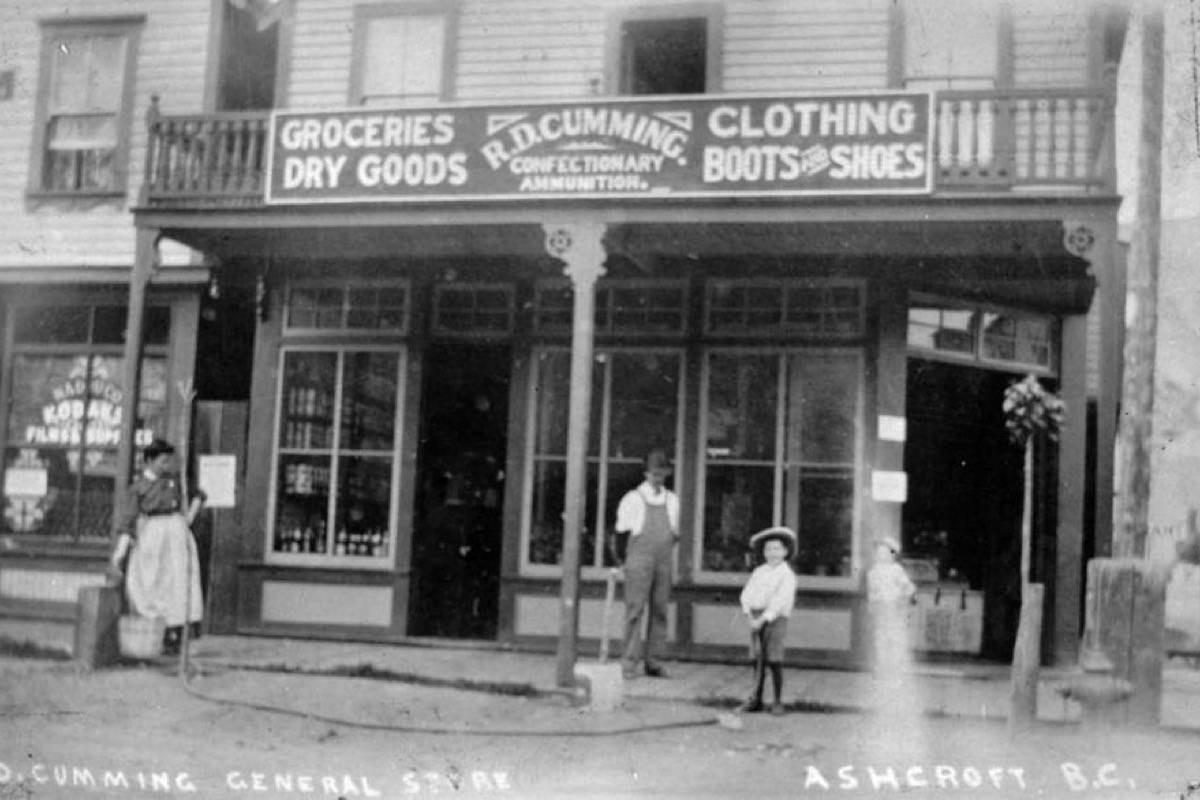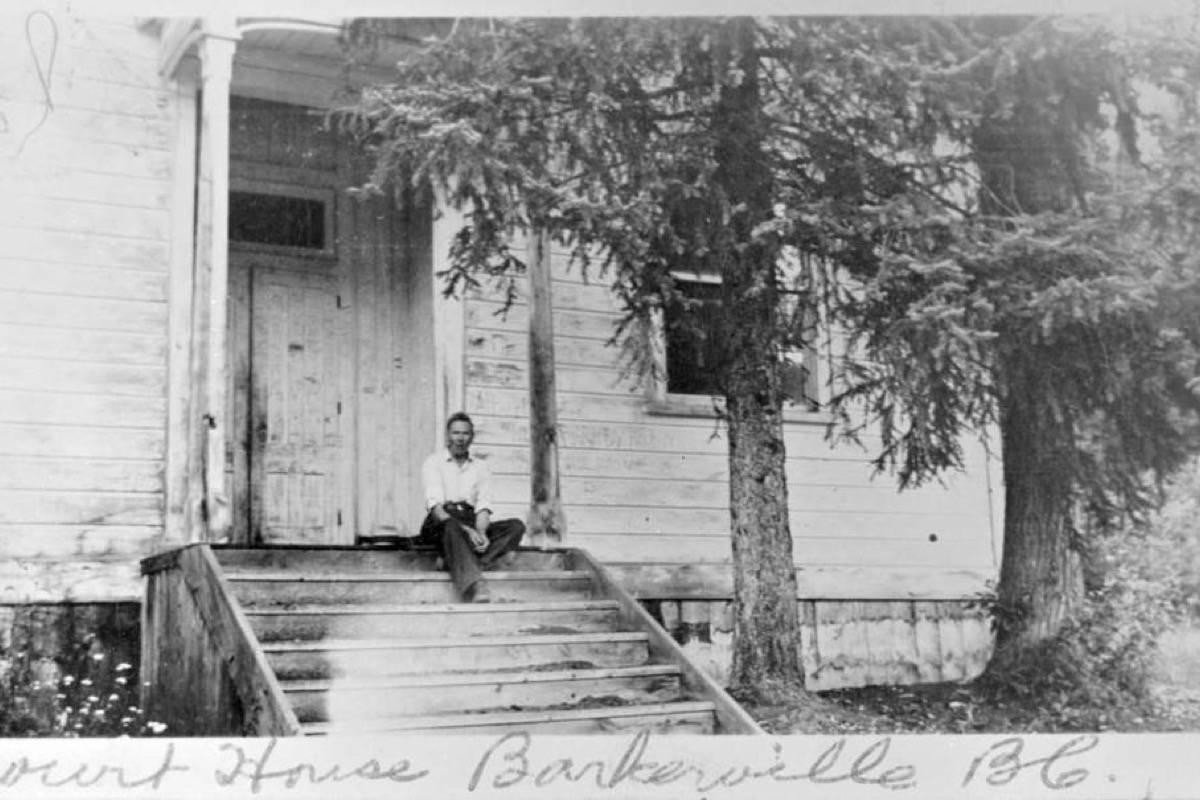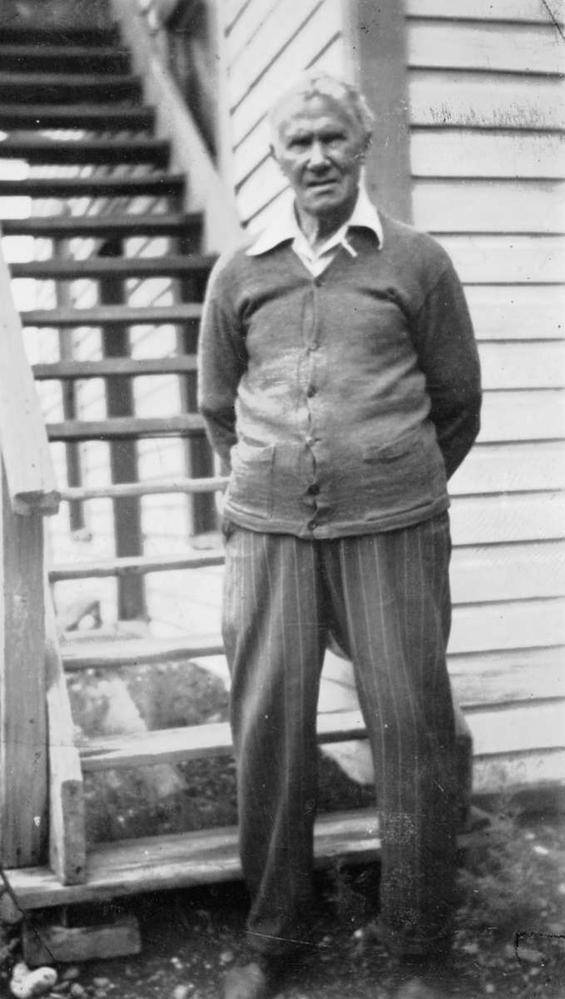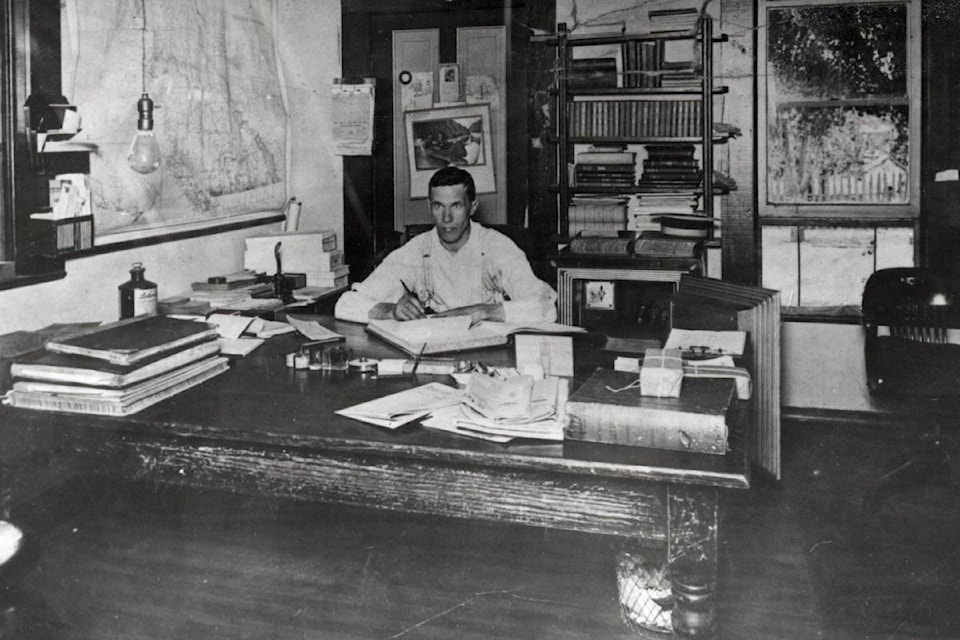Robert Dalziel Cumming was a man who thrived on being busy, and who was prepared to turn his hand to almost anything. Born in Glasgow, Scotland in 1871, he was 12 when his family emigrated to the B.C. Interior in 1885, to help his uncle, William Lee, run a grist mill at Pavilion.
In 1903 Cumming purchased a store in Ashcroft and moved there with his wife Margaret and their three children, the youngest of whom, Llewellyn (“Lew”), was not even a year old. The store, on the corner of Railway Avenue and 4th Street (the ReMax office now occupies the site), sold all manner of items, from groceries and dry goods to confectionary and ammunition.
A bench outside the store was a popular and convenient place for people to sit and rest, and legend has it that on a May day in 1906, Cumming returned from a coffee break to find a grey-haired stranger dandling young Lew on his lap.
The man said his name was George Edwards, and that he was waiting for some friends to join him before they all went prospecting in Highland Valley. He purchased some supplies and was in town for two days; then he and his friends left. Three days later the CPR mail train was held up at Ducks (now Monte Creek) east of Kamloops, and the culprit turned out to be Edwards, whose real name was Bill Miner, better known today as “The Grey Fox”.
The store was, by all accounts, a success, but Cumming’s real interest was the literary life. In 1912 Journal owner D.W. Rowlands decided to sell up and move out, and Cumming leapt at the opportunity to pursue his passion. He purchased the Journal, whose office on 4th Street was just around the corner from his store, and settled in as editor; a position he held until 1938.
Shortly after taking over the paper, Cumming’s first book, Songs of a Sick Tum Tum, was published under the byline “Skookum Chuck”. The collection of tales and poetry was followed by Skookum Chuck Fables in 1915, and in both works Cumming drew on the people, places, and landscape of the region. He published excerpts from his works in the Journal, the first one in the August 24, 1912 issue: a poem on a flower he called the Yellow Bell, which rendered cheerful the desert in which it bloomed.
There is a word, “pawky”, which describes a sly and mischievous wit, and Cumming possessed a pawky sense of humour in spades, which manifests itself throughout the pages of the Journal. He was also keenly interested in new technology and advances; he was a great promoter of the wonders of Mr. Russell’s movie house (and eventually owned a movie house of his own in town), and when a phone system was installed in Ashcroft in 1914 he followed its progress with breathless interest, documenting every new development in the pages of the paper.
Nothing about the system—from the delivery of wires to the installation of telephone poles—was too inconsequential to write about. He was quick to sign up the Journal office (its number was Ashcroft 16) and his own house on Bancroft Street, across from the Community Hall (Ashcroft 34) for the first round of service, and on Sept. 9, 1914 the paper received its first phone call, doubtless to Cumming’s delight.
One can imagine him poised over the instrument, waiting for this momentous occasion, only to be disappointed: “On Wednesday the Journal had its first call on the telephone,” he wrote in the Sept. 12 issue of the paper. “We replied promptly, anticipating a word with the ‘hello girl’, but it was a false alarm and we were stung.”
The “hello girl” (operator) was Miss Thelma Porter, aged 16, who seems to have encountered a few difficulties in her new job; difficulties unrelated to the technology, for on Sept. 26 Cumming wrote in the paper that “Flirting with the ‘hello girl’ over the phone is strictly prohibited.” He was also keenly aware—and slightly ahead of his time—in appreciating the possibilities of the new technology, writing that “Every family in Ashcroft should hook up to the telephone system, because you can not only order your groceries without going out in the cold or rain, but you can call up the Journal and report your local news items.”
Cumming was also remarkably prescient in noting (in 1912) ways in which local residents could “kill” their town. “Tell your merchants that you can buy goods a great deal cheaper in some other town and charge them with extortion. Denounce your merchant because he makes a profit on his goods. Make your town out a bad place and stab it every chance you get.”
Cumming’s four sons all learned the newspaper trade, with Lew eventually taking over from his father. In an interview in the late 1970s, Lew reminisced about the early days of the paper and his family’s connection with it. He also talked about what it was like to run a small town weekly paper; an experience that has not changed much in the intervening years:
“In a weekly newspaper you had to be editor, complaint department, and everything else. You got to be an all around man. You have to know how to set type, you have to go out and get news, and if the phone rings you have to know exactly what to say. Meetings, you generally just go and sit there and take notes then go home and write it up.
“The people around here like Clinton, Lytton, Spences Bridge, Walhachin, Savona, and Cache Creek, they’ve all been splendid supporters. They’re all sent in news if anything happened. We don’t put any screeching headlines in, we don’t put anything in that sounds scary or anything. It’s just so and so visits here and there. Where the parties were and little things like that.”
Lew’s son Llew Jr. took over the paper in turn, with a fourth generation briefly helping out in 1977 and 1978. In September of that year the paper was acquired by David Black and became the second newspaper (after the Williams Lake Tribune) in what was then called Cariboo Press (now Black Press). Between 1980 and 1988 the Journal also published the Logan Lake Leader, which in 1981 became a four-page weekly publication that was delivered, separate from the Journal, to Logan Lake and which featured news from that community.
Over the course of its 125 years the Journal has changed its name, its size, and its publication date many times, but one thing has remained constant: an issue every week since May 9, 1895. Another weekly paper, the Chilliwack Progress, predates the Journal by four years, but from 1983 to 2020 switched to a bi-weekly format, making the Ashcroft-Cache Creek Journal the oldest continuously published weekly paper in the province of British Columbia.
“We came to Ashcroft to publish a Mining Journal and mind our own business,” wrote the paper’s founders in 1895. “Whether we make a success or not time will tell. Let the people judge.”
It seems the people have.
editorial@accjournal.ca
Like us on Facebook and follow us on Twitter



